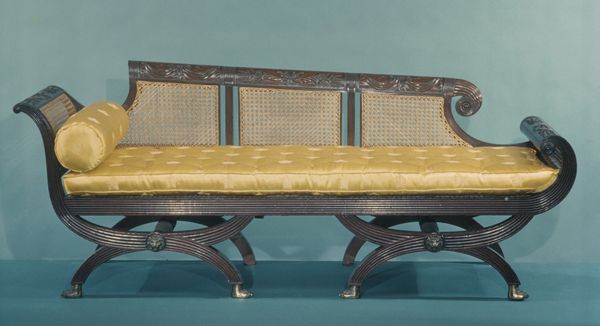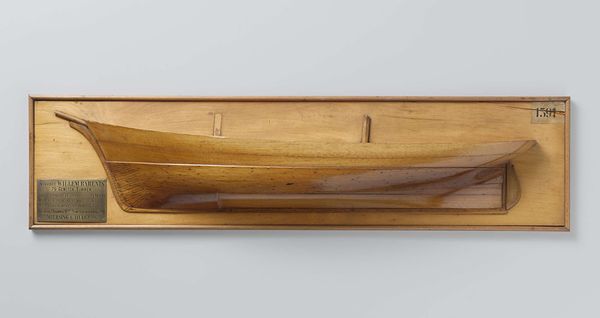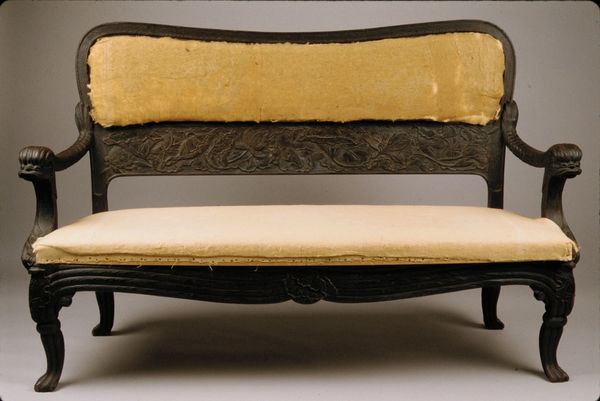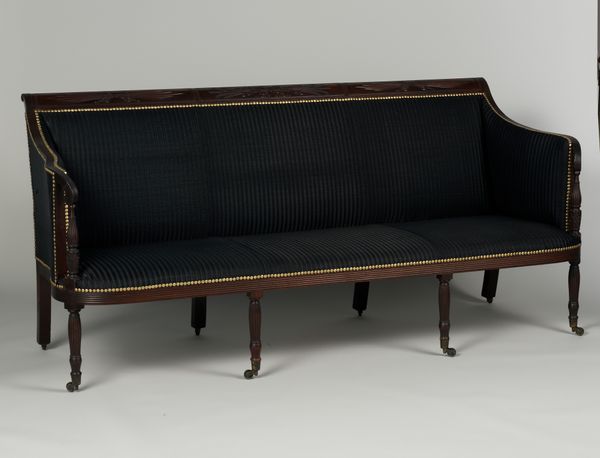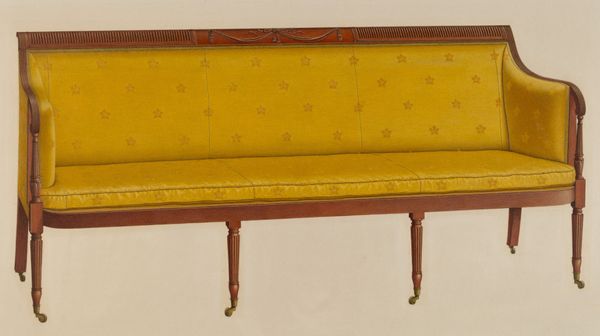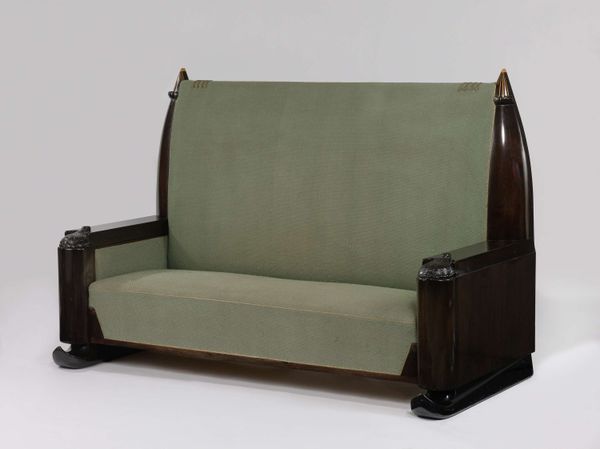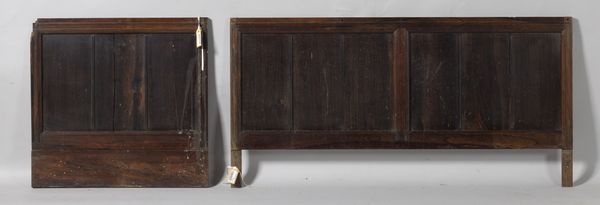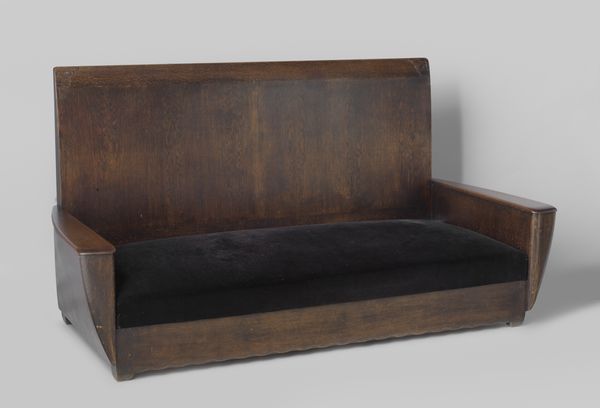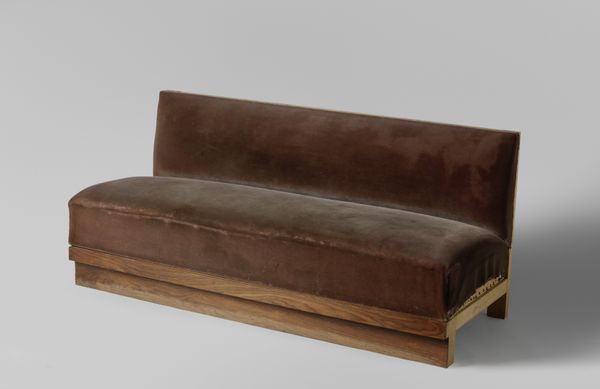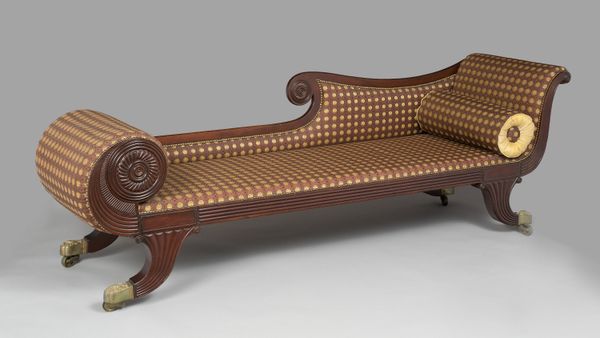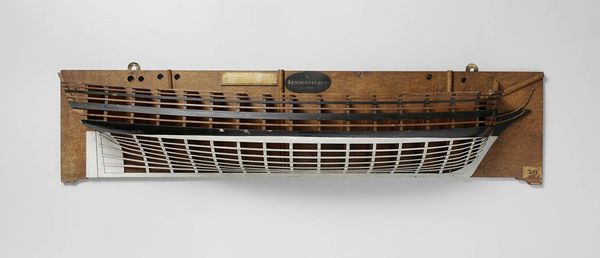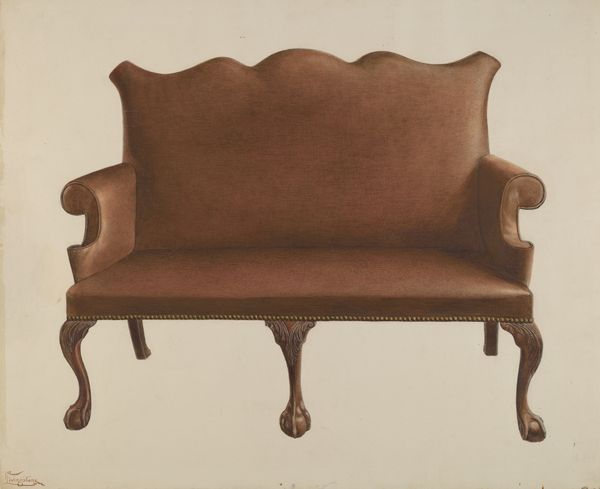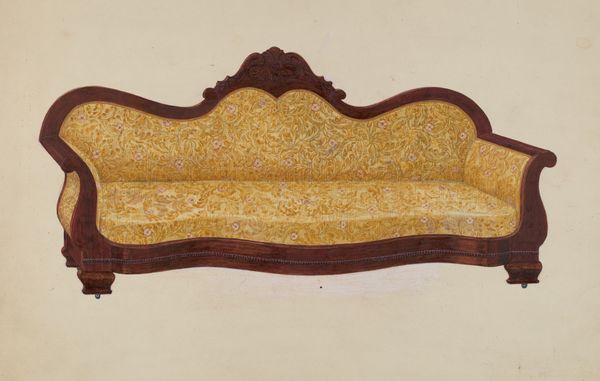
wood
#
portrait
#
wood texture
#
decorative element
#
furniture
#
wooden interior design
#
romanticism
#
wooden texture
#
wood
#
decorative-art
Dimensions: 34 1/4 x 92 x 22 1/2 in. (87 x 233.68 x 57.15 cm)
Copyright: Public Domain
Editor: Here we have "Sofa," crafted around 1840, currently housed at the Minneapolis Institute of Art. It's predominantly wood. The dark, almost severe color palette makes it appear incredibly formal, yet the curving elements and those fascinating carved feet soften its overall effect. What strikes you most about its construction and design? Curator: Initially, note the dramatic juxtaposition of orthogonal and curvilinear forms. Observe how the rigid base and back, delineated by emphatic horizontal lines, serve as a foundation for the extravagant curves of the arms. How does that interplay speak to you? Editor: It's a purposeful contrast. The strong, straight lines give a sense of stability, while the curves almost seem to flaunt. Like the tension between control and freedom? Curator: Precisely. Focus also on the surfaces. Notice the differing treatments of the wooden frame versus the textile elements. Consider how the wood’s polish and grain create a sense of depth and texture, which is then complicated by the smoother, flatter surfaces of the upholstery. Does that materiality suggest a specific reading to you? Editor: I see, so the glossy wood is contrasted by matte textile which seems... purposeful in creating visual interests? Curator: In this piece, yes, everything revolves around a study of contrasts and balance that are embedded in structure. How the forms speak to one another reveals much more about the piece than period details alone. Editor: That’s fascinating; I had not considered reading a piece in that light. Looking at the form first, it helps avoid presumptions based only on surface understanding.
Comments
minneapolisinstituteofart almost 2 years ago
⋮
This sofa was high-tech for its day. Mass-produced, upholstered in horsehair (fabric woven from horse tails and cotton or silk), with newly invented coil-spring seating, such furniture was all the rage with the growing American middle class. Joseph Meeks and Sons, one of the most prolific furniture manufacturers in America, advertised a similar sofa for $80 (about $2,000 in 2015 dollars) for sale in its New York and New Orleans showrooms. The sweeping curves and scrolls and the lion’s-paw feet are characteristic of the Greek Revival style. Popular in both Europe and America, it was inspired by archaeological finds of the mid-1700s. Such harking back to classical Greece appealed to Americans, who traced their democracy to ancient Athens.
Join the conversation
Join millions of artists and users on Artera today and experience the ultimate creative platform.
